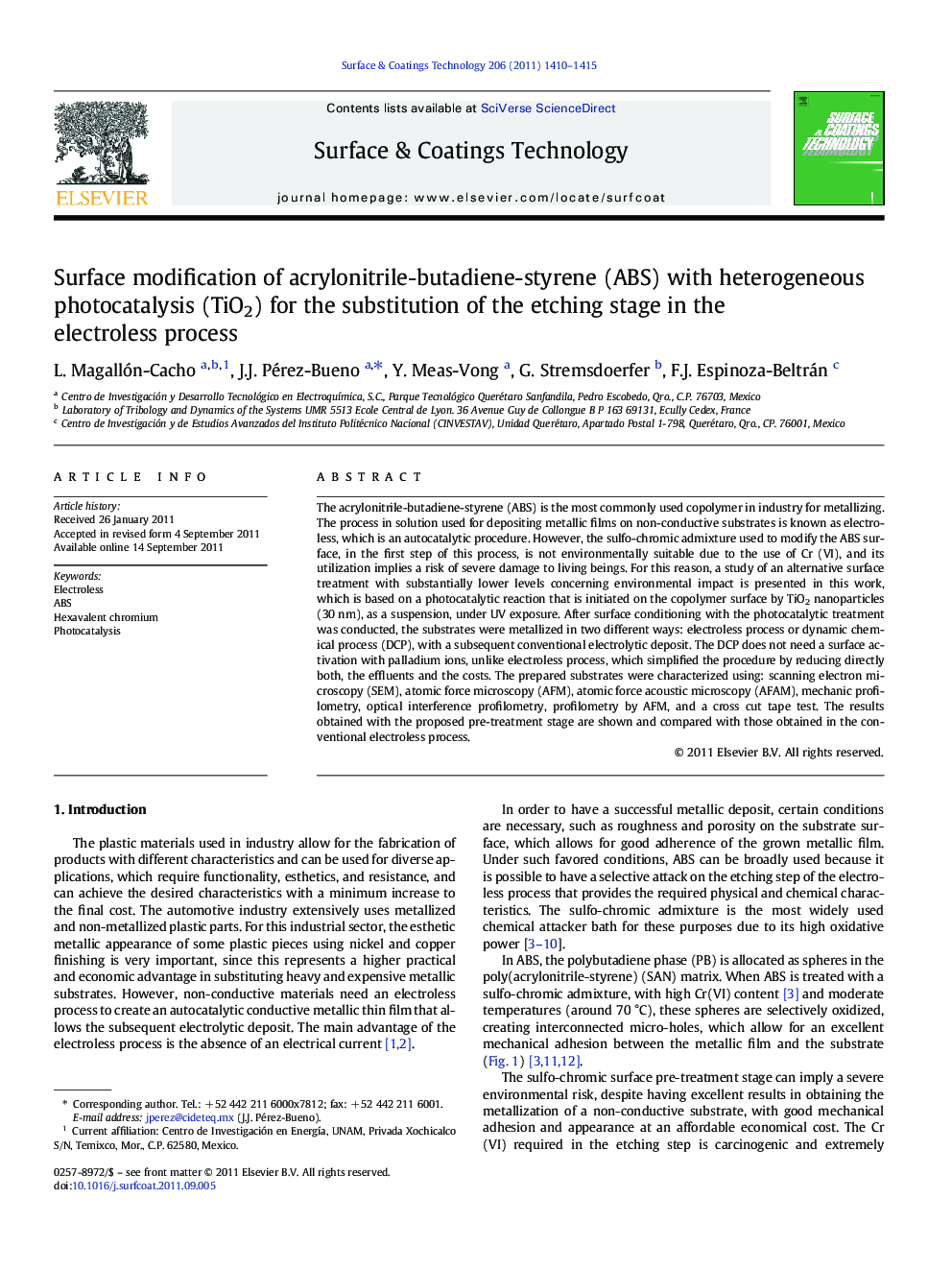| Article ID | Journal | Published Year | Pages | File Type |
|---|---|---|---|---|
| 1658742 | Surface and Coatings Technology | 2011 | 6 Pages |
The acrylonitrile-butadiene-styrene (ABS) is the most commonly used copolymer in industry for metallizing. The process in solution used for depositing metallic films on non-conductive substrates is known as electroless, which is an autocatalytic procedure. However, the sulfo-chromic admixture used to modify the ABS surface, in the first step of this process, is not environmentally suitable due to the use of Cr (VI), and its utilization implies a risk of severe damage to living beings. For this reason, a study of an alternative surface treatment with substantially lower levels concerning environmental impact is presented in this work, which is based on a photocatalytic reaction that is initiated on the copolymer surface by TiO2 nanoparticles (30 nm), as a suspension, under UV exposure. After surface conditioning with the photocatalytic treatment was conducted, the substrates were metallized in two different ways: electroless process or dynamic chemical process (DCP), with a subsequent conventional electrolytic deposit. The DCP does not need a surface activation with palladium ions, unlike electroless process, which simplified the procedure by reducing directly both, the effluents and the costs. The prepared substrates were characterized using: scanning electron microscopy (SEM), atomic force microscopy (AFM), atomic force acoustic microscopy (AFAM), mechanic profilometry, optical interference profilometry, profilometry by AFM, and a cross cut tape test. The results obtained with the proposed pre-treatment stage are shown and compared with those obtained in the conventional electroless process.
► Photocatalytic alternative to sulfo-chromic chemical pre-treatment for electroless. ► TiO2 nanoparticles suspension on ABS exposed to UV impart roughness and activation. ► AFM, mechanical and optical profilometry show the treatment effect on ABS surface. ► Electroless and electrolytic deposits show high adherence with TiO2 pre-treatment.
